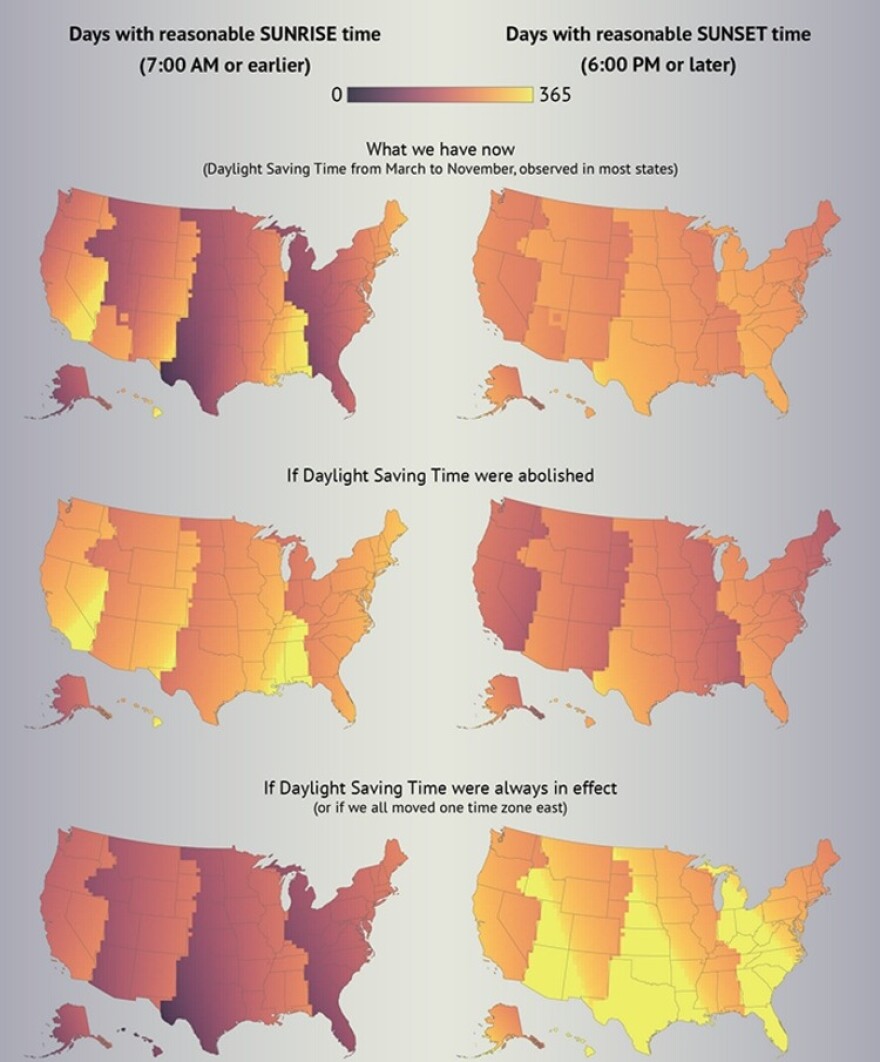If you, like me, spent this morning stewing in the juices of your hatred for daylight saving time (I’ve been indulging the fantasy of creating a super PAC to give money to congressional candidates who vow to abolish it, but have been stuck on how to raise millions of dollars), consider how it would change things for you if it ceased to exist. A cartographer named Andy Woodruff has created an interactive map to help us. (It’s not really daylight saving time I hate, just adjusting to the semiannual time change.)
Keep in mind that the length of your day is entirely a product of how far from the equator you live. But what the clock says in relation to the length of your day is more or less an arbitrary human invention and something we can change. We made up time zones and their gerrymandering borders and we decide what time it is where.
The way we do it now
Because southwest Idaho is so far west within the Mountain time zone, we have some of the latest sunrises in the country – a little more than 120 days annually when the sun rises before 7:00 a.m. Go just a bit south to Elko, Nevada and you’d have about 300 days with the sun peaking over the desert horizon before 7:00.
Because of how the time zone is drawn, southwest Idaho also has an unusually high number of days with light in the evenings. Boise has more than 220 days a year where the sun sets after 7:00 p.m., according to Woodruff’s map.
So if you want to stop changing your clock every six months, ask yourself which you would prefer more of: early sun raises or late sunsets?
Abolish daylight saving time
If we keep the clocks all year round how we have them in the winter, then southwest Idaho would get more than 200 sunrises a year before 7:00 a.m. That would still be among the fewest in the country, but a lot more than we get now. We’d even have some before 6:00 am.
But that would mean fewer than 180 days a year where the sun goes down after 7:00. We’d be one of only a handful of places in the continental U.S. with any sunsets after 8:30, but we’d only have about 20.
Never stop saving daylight
But if we change it the other way and keep the clocks set all year like we currently do in the summer, we’d have more than 130 sunsets after 8:30 and more than 250 after 7:00 p.m.
In the daylight saving all year scenario, southwest Idaho has about the same number of sunrises before 7:00 am that we have now. My imaginary super PAC will give money to candidates who support this plan because, personally, I like more light in the evenings. You morning people will have to make your own PAC.
Find Adam Cotterell on Twitter @cotterelladam
Copyright 2016 Boise State Public Radio



